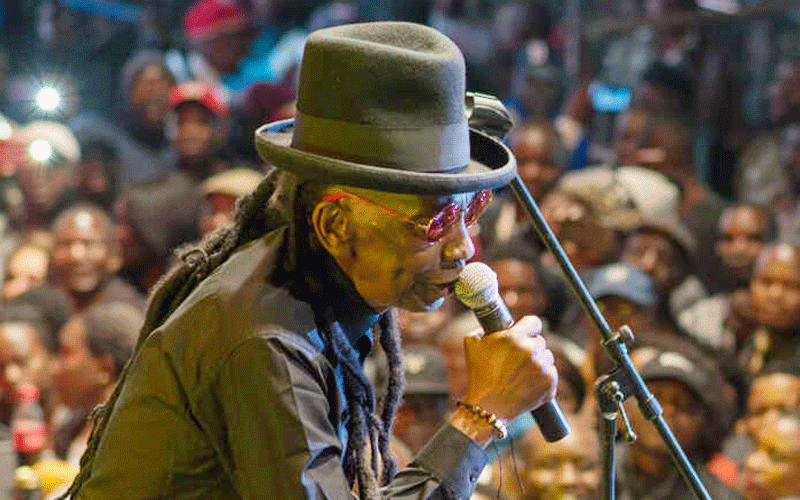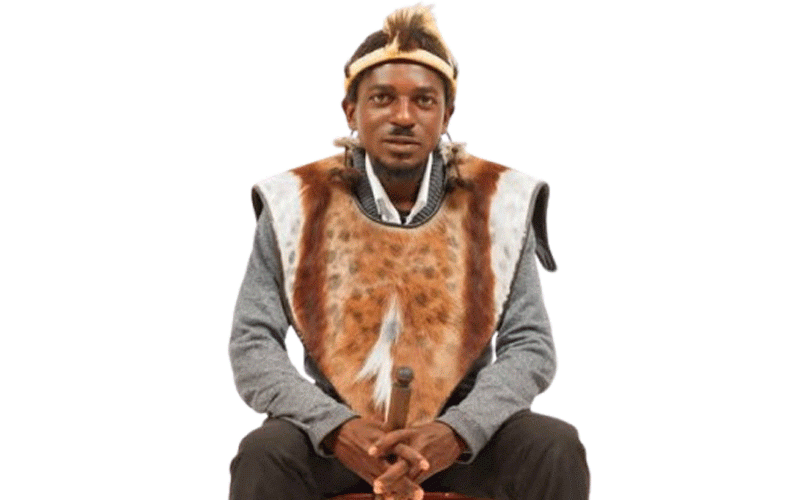
viewpoint:By Blessing Mandabva
Human beings, the world over, believe in what they cannot attest. They may not be put to proof of their religious doctrines or beliefs. Religious experiences which are as genuine as life to some may be unfathomable to others. Yet, the fact that they go beyond the wit of mortals does not mean that they can be made suspect.
Zimbabwe allows freedom of worship as contained in Chapter 4 of the Constitution under Part 2 Fundamental Human Rights and Freedoms (Sub-section 60) which states that: “Everyone has the right to freedom of conscience, which includes the right to freedom of thought, opinion, religion or belief; and freedom to practice and propagate and give expression to their thought, opinion, religion or belief, whether in public or in private and whether alone or together with others.”
The funeral of socialite Michelle “Moana” Amuli, who died in a horrific car accident on November 8 with businessman Genius “Ginimbi” Kadungure, had its fair share of family squabbles hinged on religion and the cultural context. Moana’s father Ishmael Amuli had this to say about his daughter: “Moana was now a party animal and was featuring in many music videos, which was abominable in the Muslim religion.”
Moana had stayed with her father at least for 25 years and had not renounced the Muslim religion she had grown under although she had become a pain to her father. There were some misconceptions pertaining to Muslim funeral rites.
According to the 2015 Zimbabwe Demographic and Health Survey, 86% of the population is Christian, 11% reports no religious affiliation and less than 2% adheres uniquely to traditional beliefs and less than 1% is Muslim. Despite Muslim adherents being at least 1% of the population of Zimbabwe, High Court judge Justice Pisirayi Kwenda could not be influenced by such demographic figures, he delivered a profound ruling.
At least for now it can be safely said Moana was granted full Muslim burial rites, although due to the nature of the family squabbles they ended up having a custom made burial of the socialite fashioned to suit both parties. One of the contentious issues was that women were not allowed at the mosque and burial site.
There was a clear interaction of religions as the local Muslim community allowed woman mourners to take part in the proceedings. Photographers, journalists and videographers who are not normally welcome were also allowed. This was done for the sake of educating Zimbabweans and the world over to promote tolerance among different religions and cultures.
- Chamisa under fire over US$120K donation
- Mavhunga puts DeMbare into Chibuku quarterfinals
- Pension funds bet on Cabora Bassa oilfields
- Councils defy govt fire tender directive
Keep Reading
“For the sake of educating society and promoting broadmindedness in different cultures, we have allowed everyone to participate, said Islamic religion leader, Sheikah Abudullah Siwacha, speaking at the burial of Moana.
According to Islamic tradition, the highest honour given to a deceased person is a swift burial. They try to bury their own before sunset on the same day of death where possible, and before sunset on the following day if circumstances make same day burial impossible. A speedy burial is of the utmost importance, in ecological terms this does away with the need for refrigeration. Moana’s burial fell far short of this standard due to the circumstances surrounding her death whereby DNA results took time to come out coupled with the feud between the parents, which was later resolved by the courts.
The Amuli family spokesperson, Jabulani Amuli, said: “There is no such a thing as swift burial for Muslim believers. This is just speculation, burial can be done anytime any day.”
According to the Muslim tradition burying in a coffin is not permitted unless there is necessity for health or legal reasons, for instance, if the body is badly damaged, or if the country of residence has burial laws which prohibit burial without a coffin. They also use a steel casket which is said to be re-used by the community for all burial. It is used for the purposes of containing the body and not for burial. Once at the burial site, the deceased is lifted out of the coffin and buried in a shroud.
A rope is tied at the top of the head and another below the feet. One or two ropes are tied around the middle of the body. The body is then lowered into the trench and turned on its right to face the Qiblah, (the direction of the sacred shrine in Mecca). Wooden planks are then placed, effectively closing the deceased in a cavern. The slits between the planks are then covered with bamboo, unbaked bricks, mud or grass. Wooden planks are then placed at an angle, effectively closing the deceased in a cavern. The slits between the planks are then covered with bamboo, unbaked bricks, mud or grass. This was a similar process accorded to Moana as per the Muslim religion.
In some areas, everyone can be present at the burial. However, traditionally women are not allowed to attend. With the Moana situation women took part. The mourners who are present throw three handfuls of dust onto the casket. They say: “We created you from it, and return you into it, and from it we raise you a second time.” In some instances where everyone is allowed, men and women typically sit separately. Traditionally, the women sit at the back.
When a Muslim’s death is imminent, the whole family and closest friends are there. They believe that the dying see things than the living. Moana foresaw her impending death according to a video she posted on social media network Instagram highlighting that she saw herself sinking deeper and crying for help. They go through an agonising period called a death struggle, which is filled with unimaginable agonies.
Asked for comment, Jabulani dismissed such assertions as mere speculation which is fallacious and frivolous. In most cases friends and family gather around and offer the dying person courage, to help them endure the agonies. They chant and encourage the dying person to say: “Shahada. There is no God, but Allah, and Muhammad is his messenger.” The goal is that the person says those words at the exact time of death.
When attending a Muslim funeral, the main thing to keep in mind is to dress modestly. Wear clothing that will make you blend in and do not draw attention to you. Stay away from bright colours or flashy jewellery. The actual funeral service is typically brief. It’s mainly comprised of saying the funeral prayers. This part of the service will likely last less than an hour.
However, they believe the funeral begins before the person dies and ends after the burial. Family and friends usually say the funeral prayer to themselves, led by the Iman. The sending of flowers to the family can vary between the different Muslim sects. Simplicity and moderation are emphasised in the Islam religion; therefore gifts of flowers are frequently not given.
Muslims believe that at death, they are buried and remain in their grave until the day of judgement.
Good Muslims will go to paradise and experience peace. Those who have led a sinful life are destined for hell, and will begin their suffering.
There is a misconception that Muslims are buried in the sea. In most cases, a burial at sea is not permitted except under extraordinary circumstances. For instance, if the person dies while at sea and the body cannot be transported back to land due to the long distance.
Cremation is forbidden in the Islamic religion. It is considered disrespectful to the dead. A Muslim should not burn anyone, witness a cremation, or approve of it in any way. The only exception is if the person died due to a contagious disease. Even though, the potential for the disease to spread must be proven and permission received from the authorities.
The mourning period begins from the time of death. The time period varies depending on a person’s relationship to the departed. Four months and 10 days is the mourning period for the widow. During that time, she is not to move from the house shared with her husband. In addition, she must wear modest clothing and no jewellery. She is not allowed to remarry another man. The period of mourning for a widower is only three days and he can plan to remarry during that time. The mourning period for a family is also three days. They share and express emotions for the departed while they prepare for the funeral and welcome visitors into the home. Distant relatives bring prepared meals to the immediate family.
There are possibilities of religions working hand in glove without despising each other. The Kuvaoga family (Moana’s mother’s family), who belong to the Christianity religion, were given ample time to do their Christian prayers with pastors presiding over it. “We managed to give the Kuvaoga family the time and chance to pay their last respects by offering prayers,” said Jabulani.
The funeral of Moana has shown the whole nation that the world in general and world religions in particular are capable enough to recognise intolerance and extremism and use various mechanisms to defeat this menace.
For instance, peace education, sensitisation, civilisational dialogue, tolerance, conferences, joint sports, and the exchange of ideas may be the ways forward to preserve unity in diversity.
We long to see interreligious relationships maintained, conflict, hatred, and mistrust reduced and peace, harmony and coexistence established in multi- religious and multicultural societies.











